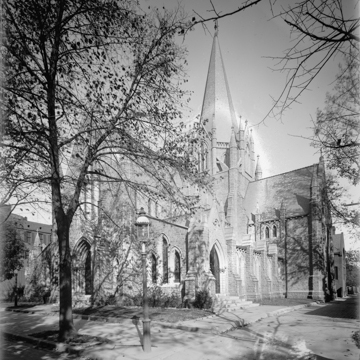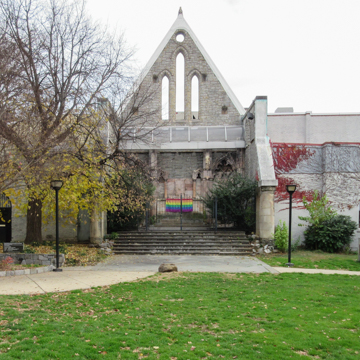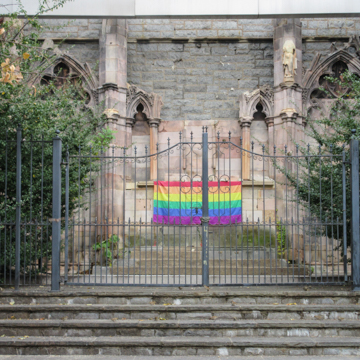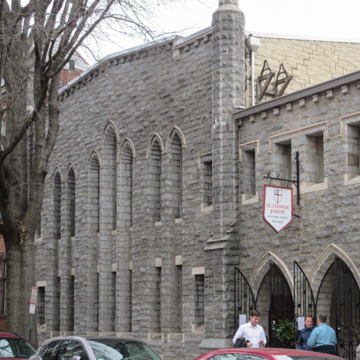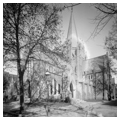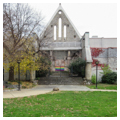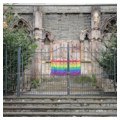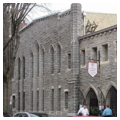All that survives of Philadelphia architect Theophilus P. Chandler's rock-faced Neo-Gothic church is its fragmentary east end, essentially two bays with English perpendicular blind tracery that flank a partially preserved carved altar screen set between clustered piers. Originally the Latin-cross church seated 850 people and its lantern tower rose 100 feet above the crossing. The decision by parishioners in 1970 not to rebuild Saint Thomas after it had been nearly destroyed by arsonists, but to stabilize the ruin and make it the centerpiece of an urban park, was due to the small size of the congregation and its commitment to the needs of the socially evolving neighborhood. Romantic ruins as memorials or landscape garden elements are common in Europe, but such a pensive interlude is entirely unexpected in Washington and therefore quite evocative.
You are here
Saint Thomas Episcopal Church
If SAH Archipedia has been useful to you, please consider supporting it.
SAH Archipedia tells the story of the United States through its buildings, landscapes, and cities. This freely available resource empowers the public with authoritative knowledge that deepens their understanding and appreciation of the built environment. But the Society of Architectural Historians, which created SAH Archipedia with University of Virginia Press, needs your support to maintain the high-caliber research, writing, photography, cartography, editing, design, and programming that make SAH Archipedia a trusted online resource available to all who value the history of place, heritage tourism, and learning.










